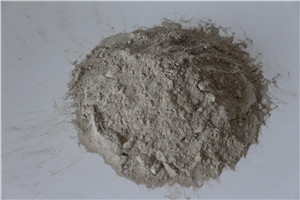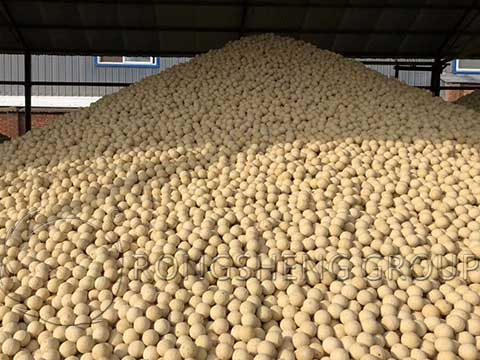
In high - temperature industries such as power, steel, and petrochemicals, refractory materials face numerous challenges. High temperatures can cause materials to melt, deform, or react chemically, leading to equipment damage and reduced operational efficiency. For example, in power industry high - temperature furnaces, the temperature can reach up to 1700°C or even higher. At such extreme temperatures, common materials cannot withstand the heat, resulting in frequent equipment failures and increased maintenance costs.

Zhengzhou Rongsheng Refractory Materials Co., Ltd.'s high - alumina refractory balls have an outstanding refractoriness ranging from 1770°C to 2000°C. This high refractoriness ensures that the refractory balls can maintain their structural integrity in the most extreme high - temperature environments, providing reliable protection for high - temperature furnaces.
Thermal stability is crucial for refractory materials. These high - alumina refractory balls have excellent thermal stability, which means they can resist thermal shock and expansion - contraction cycles caused by temperature changes. The thermal expansion coefficient is as low as 0.5 - 0.8% (at 1000°C), ensuring long - term stability of the furnace lining.
In high - temperature industrial environments, refractory materials are often exposed to various chemical substances. The high - alumina refractory balls have strong chemical resistance, especially against acidic and alkaline substances. They can effectively prevent chemical corrosion, which is essential for maintaining the performance of high - temperature equipment.
With a low thermal conductivity of 1.0 - 1.5 W/(m·K) (at 1000°C), these refractory balls can reduce heat loss, improve energy efficiency, and save energy costs for high - temperature industries.

The core components of these high - alumina refractory balls, Al₂O₃, SiO₂, and MgO, play vital roles in enhancing refractory performance. Al₂O₃ has high refractoriness and hardness, which can significantly improve the overall refractoriness of the refractory balls. SiO₂ can form a glassy phase at high temperatures, enhancing the bonding strength and chemical stability of the material. MgO can improve the thermal shock resistance and slag resistance of the refractory balls.
Zhengzhou Rongsheng understands that different customers in the power industry have diverse requirements. Therefore, they offer customized services. Whether it's the size, shape, or specific performance requirements of the refractory balls, the company can provide tailored solutions. For example, some power plants may need refractory balls with higher refractoriness, while others may require better thermal shock resistance. Through customization, the company can precisely meet these individual needs.
The company has a global service network covering more than 70 countries. This extensive network ensures fast response and high - quality service for customers around the world. In the power industry, these high - alumina refractory balls have been widely used. For example, in a large - scale power plant in the United States, after using these refractory balls, the equipment stability has been significantly improved, and the maintenance cycle has been extended from 3 months to 6 months, greatly reducing the operating cost.

Zhengzhou Rongsheng's high - alumina refractory balls are an ideal choice for high - temperature industries. With their excellent performance, scientific composition, and customized services, they can effectively solve the key problems in high - temperature industries, improve equipment stability, and extend the service life of equipment. If you are looking for high - performance refractory materials for your power industry high - temperature furnace, don't hesitate to contact us. Click here to learn more about our high - alumina refractory balls and get professional consultation!
We encourage you to leave your questions or comments below. Our experts will be happy to answer them and help you make the best choice for your high - temperature equipment.

